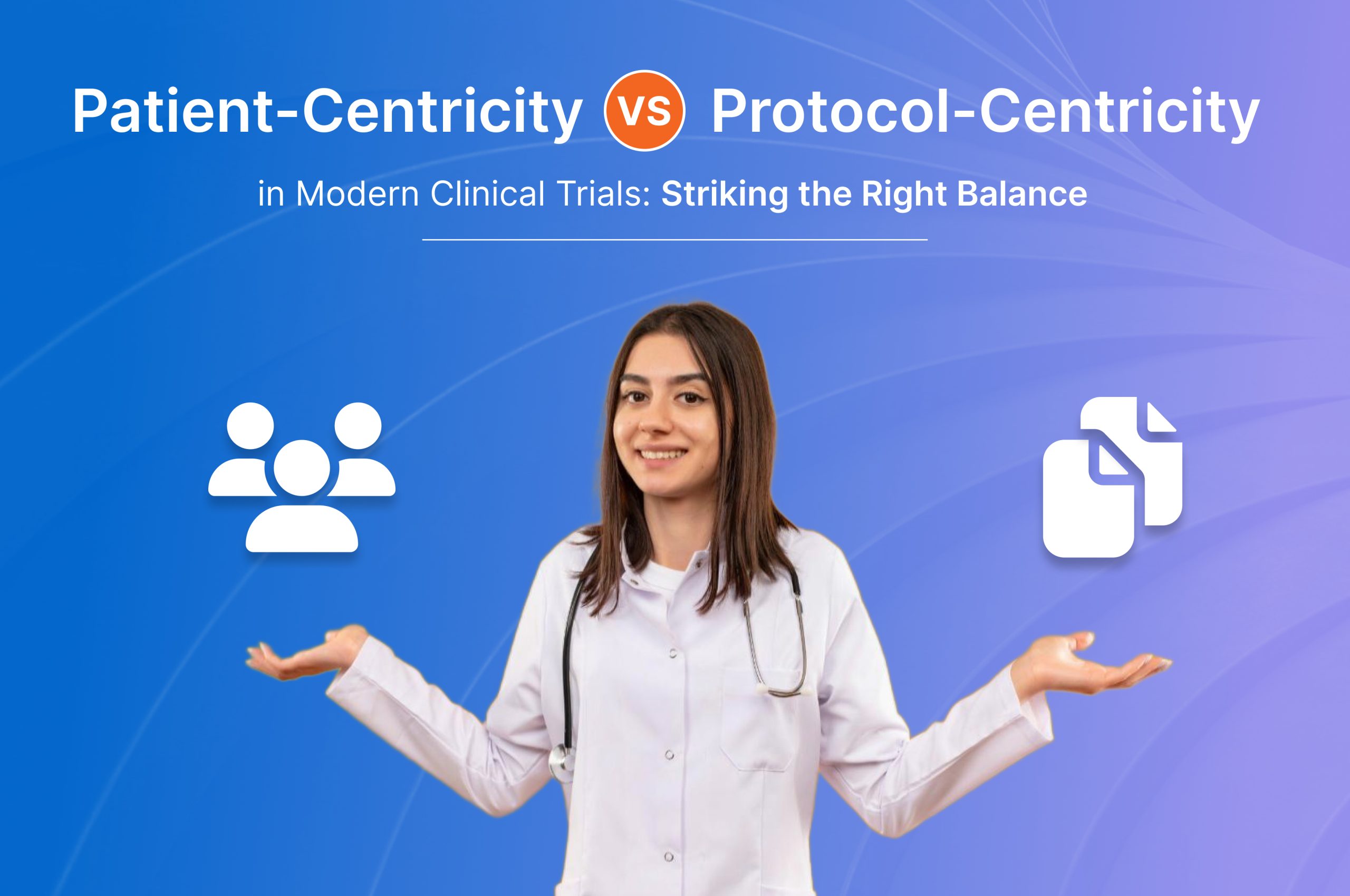An RCT is any form of scientific research that is conducted to determine the effectiveness and efficiency of any form of medical treatment, treatment, or drug, by enrolling and randomly allocating participants into different groups.
The "gold standard" for clinical research, RCTs minimize biases so that researchers can make confident conclusions regarding the efficacy and safety of new treatments. The way RCTs are structured, including the method of randomization and the employment of control groups, ensures that outcomes are because of the intervention and not because of a lot of extraneous factors.
This blog is about to give you a comprehensive definition of RCTs, explain their importance, guide through how they areconducted, and discuss the role they play in modern medicine.
What is a Randomized Clinical Trial?
A randomized clinical trial, in essence, is a type of clinical study where the participants are assigned randomly to two or more groups. Usually, an intervention group and a control group are usually present. Members of the treatment group receive the intervention that is under scrutiny; conversely, members of the control group receive a placebo or the treatment. Then, differences in outcomes between the two groups are used to measure the effectiveness of the treatment.
- Randomization: Participants are assigned to groups based on random selection to minimize the possibility of bias and make groups as homogenous as possible in terms of age, gender, and other health conditions. It would eventually minimize the effects of the expectations of either researchers or participants on the outcome.
- Control Groups: This is the baseline to which all outcomes are compared. In most studies, the control group will receive a placebo-for example, a treatment with no active therapeutic effect-or the current standard of care.
- Blinding: To reduce bias further, RCTs can be blinded. In a single-blind trial, the participants do not know what group they are in, while the researchers do not know who among the participants is receiving the treatment or placebo in a double-blind trial.
Fundamental Components of an RCT
- Intervention: The treatment or procedure under test is the RCT's main intervention. It can be a medication, medical device, behavioral therapy, or even a surgical procedure.
- Measurement of Outcome: Now this is exactly where the researchers define what kind of outcome they would measure whether it improves symptoms, reduces the rate of disease occurrence, or some particular biological marker (for example, blood pressure, cholesterol). These are the variables that will be compared in a group receiving a treatment and in the control groups.
- Ethical Issues: All RCTs must be approved by the ethical review board, and the patients must provide their informed consent so that they are fully aware of all the possible risks and benefits.
- Phases of Clinical Trial: RCTs are generally performed in phases. The earlier phases are Phase I and II. These evaluate efficacy and dose tolerance. The latter phases are Phase III and IV. These continue the effectiveness and safety evaluation in larger numbers of patients over longer periods.
Importance of Randomization
Randomization is integral to the validity of an RCT. When participants are assigned to a particular group, this process takes place on a random basis and therefore prevents selection bias in which certain characteristics may unconsciously affect which participants receive the treatment. Of course, the groups would be similar on average in relation to demographic and clinical characteristics, and the only difference between them would be the intervention under test.
For example, imagine an experiment designed to test a new blood-pressure-lowering medicine. If such an experiment randomly assigns participants with higher baseline blood pressure more frequently to the treatment group, it risks leading to an outcome in which the treatment is "better" than it really is. Randomization eliminates such distortions.
- Control Groups and Placebos
Often, a control group in most RCTs is not administered an intervention at all, administered a placebo, or continues receiving the then-standard treatment in use. It gives a reference group which helps with the differences of the intervention effect from the natural course of the disease or psychological effects, such as the placebo effect.
- Blinding to Minimize Bias
Blinding is another feature that an RCT must have. It is used to prevent observer bias and confirmation bias. In a single-blind trial, the participants do not know which one is the treatment and which one is the placebo while in the case of double-blind trial, both the participants and the researchers do not know which group/ participant is recieveing the intervention and which group is recievuing the placebo.This further reduces the possibilities of the biased assessment of the results. Double-blinding ensures the collected data is almost as objective as possible.
RCTs: The Gold Standard in Medical Research
As mentioned earlier, randomized clinical trials are the gold standard used to determine medical intervention in terms of reliability and certainty on the efficacy and safety of a new treatment. Thus, the strict design of RCTs ensures that, through this kind of setup, a cause-and-effect relationship can be determined between the intervention and the observed outcome. Some of the strong advantages of RCTs are:.
- Minimize Confounding Variables: Known and unknown variables in groups are equalised through randomization so that any difference in effect must be attributed to the intervention and not confounding variables.
- Reduce Bias: Randomization, blinding, and the presence of control groups reduce many forms of bias that would otherwise skew the outcome of RCT.
- High Internal Validity: RCT designs are very cautious and hence support high internal validity; that is, results of the trial are liable to reflect the true effect of the intervention in the study population.
The Role of RCTs in Drug Development
RCTs role: As such, the regulatory agencies in developing new drugs and medical devices, such as the U.S. Food and Drug Administration (FDA) and the European Medicines Agency (EMA), only allow them for general use following results from RCTs. The information of the evidence includes the drug's safety, side effects, and comparative overall effectiveness to treatments in existence or placebos.
For instance, high-scale RCTs have become reliant in the development of COVID-19 vaccines. Researchers could readily ascertain the efficacies of the vaccines against the production of symptomatic COVID-19 by making random assignments for receiving the vaccine or a placebo.
Drawbacks and Limitations of RCTs
Although RCTs present many advantages, they are not exempted from drawbacks. Among some challenges involved in conducting RCTs are:
- Cost and Time: RCTs are expensive and, more often than not, take years of work and are very cost-intensive. The large-scale randomized controlled trials, in particular, take a very long time to finish because they are long-lasting due to participant recruitment, follow-up, and data analysis.
- Ethical Concerns: Randomizing patients to a placebo group is questionable, especially in a situation where an effective intervention already exists. Ethical dilemmas are not only encountered when the call for powerful scientific evidence creates a situation in which patients must be enrolled into clinical studies; it also appears in the balancing of the need to treat patients as well and as effectively as possible with the resources available.
- Generalizability: While RCTs are highly controlled, the results are not always generalizable to real life. The trials therefore tend to take participants from populations that differ in comparison with those found in real life clinical settings. Applicability of the result to broader groups of patients comes into question.
Conclusion
Randomized clinical trials constitute the top echelon in medical research, providing the most reliable evidence regarding the efficacy and safety of new treatments. RCTs reduce a few biases through their design aspects in randomization, control, and blinding, hence supporting the ability of researchers to assign outcomes with high confidence in assigning them to the intervention tested.
Though highly valuable to advance knowledge in medicine, they are not free of drawbacks like ethical issues, extremely high costs, and issues with generalizability.
New research is emerging, and some major changes have to take place in the life sciences. Adaptive trials and the use of real-world data may help to address some of them. With advancements in medical research, RCTs will continue to be at the core of evidence-based medicine for the future. Want to know more about how Octalsoft’s eClinical suite can help expidite the efficiency of your next RCT?




